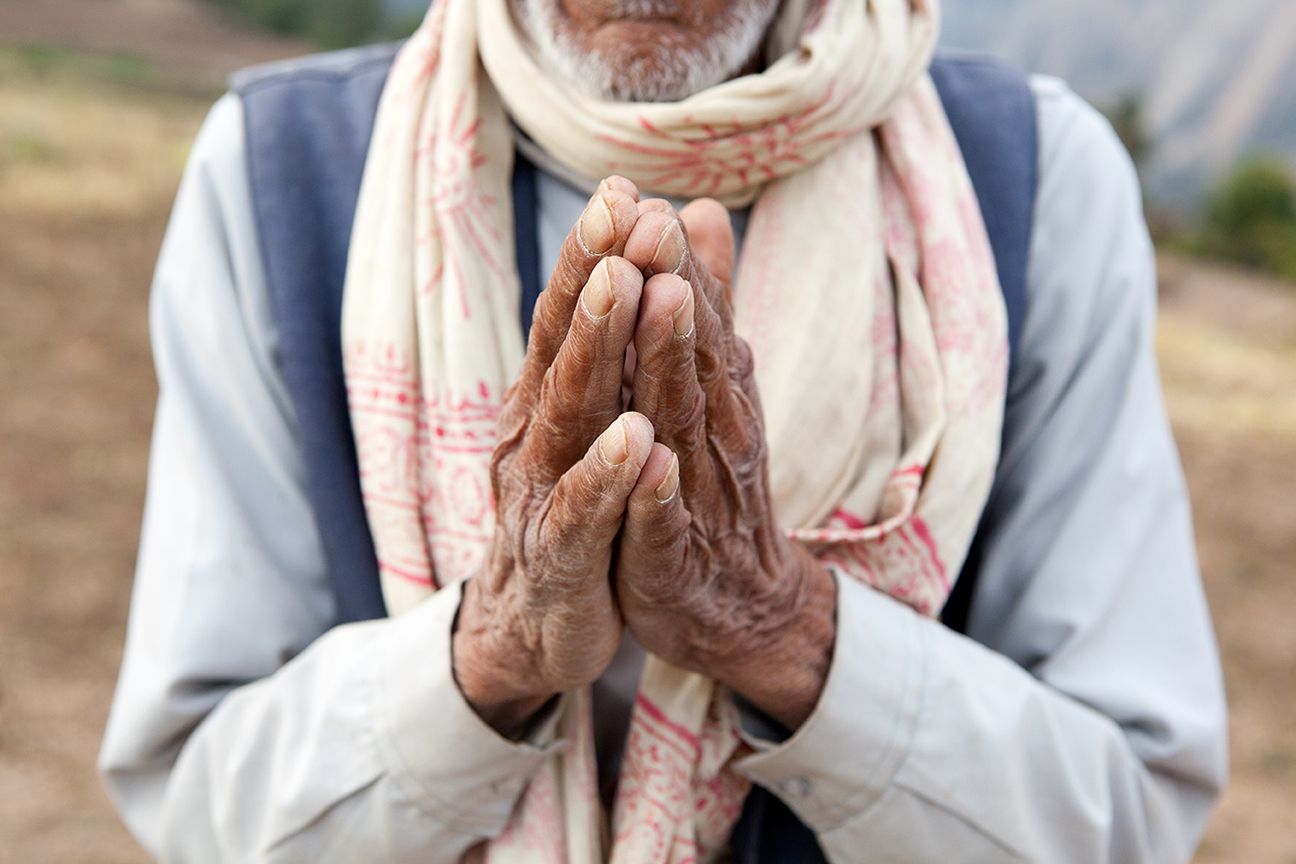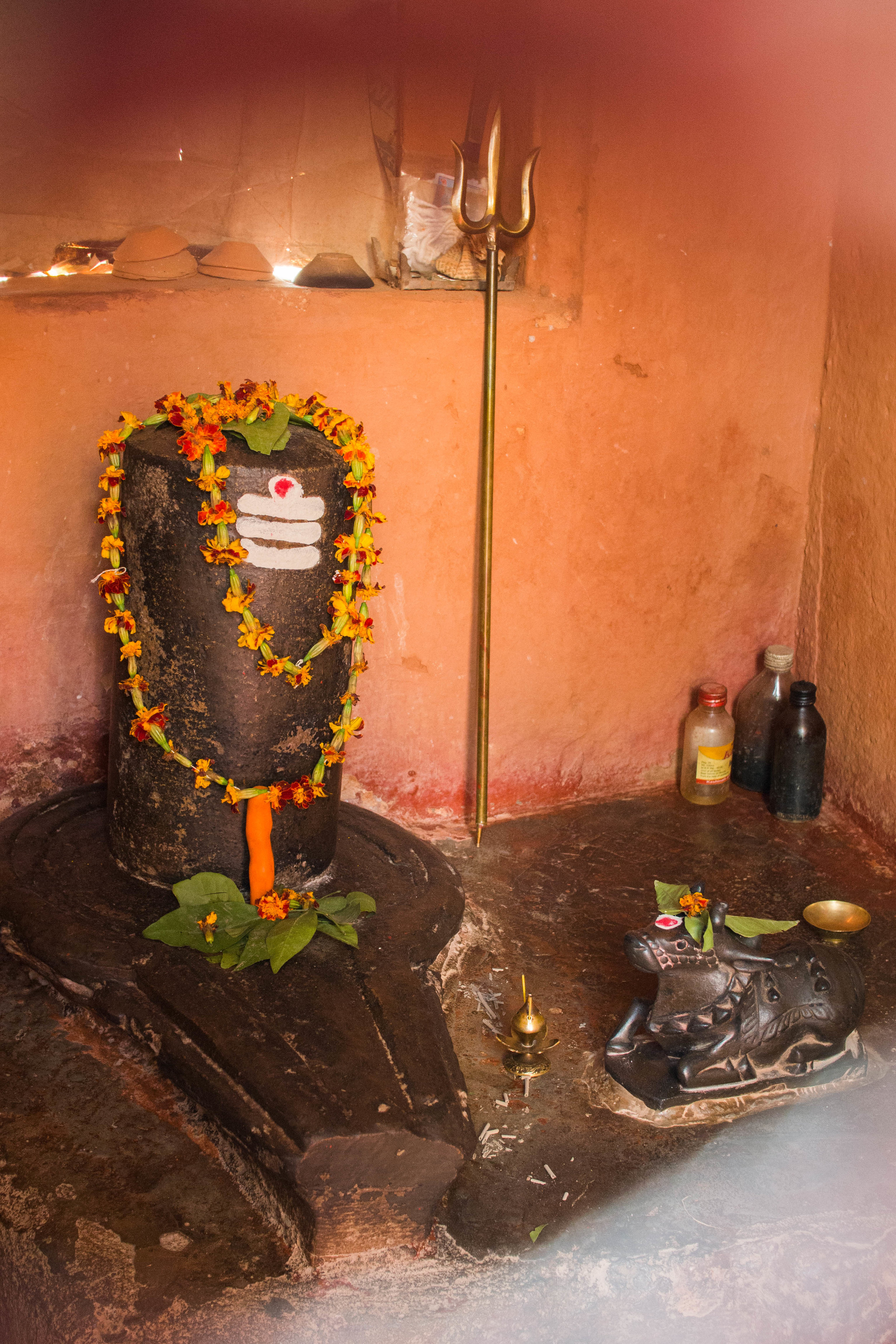As an anthropologist, I have always been fascinated by the diversity appearing in a certain unity within this world. As an artist, I constantly question the act of perception occurring through the body, shaped by my culture and personal life experiences.
This is my first exhibition, my first time putting together my anthropological work and artistic perspective. I have brought together artists with whom we share the same vision : a concern for human beings, culture, differences and unity within this world. It is a common dialogue, using various formats from artistic and street photography, documentary or fiction, to performance.
Why did I choose South Asia? Because in exploring that which appears different from us, we discover ourselves. If my studies took me to this part of the world, learning about the ancient scriptures and antique temples and devotional objects, it is also a meeting with the echo of what is essential and tremendously true in every human being.
Traces weave the world, our culture, the memory that inhabit us. Anonymous or known, everyone participates in these traces; this infinite colour that braids the world in which we live. Traces that guide me on a path that comes back to its point of origin.
For this exhibition, I invited four artists to join me for on this project: Shovan Gandhi, Kiran Ambwani, Mobeen Ansari and Stephane Desmeules.
En tant qu'anthropologue j'ai toujours été fascinée par la diversité apparaissant dans une certaine unité au sein de ce monde. En tant qu'artiste je questionne constamment l'acte de perception tel qu’il se manifeste à travers le corps, façonné par ma culture et mes expériences de vie personnelles.
C'est ma première exposition, la première fois que je réunis mon travail anthropologique et ma perspective artistique. Je rassemble ici des artistes avec qui nous partageons la même vision: une préoccupation pour l’être humain, la culture, les différences et l'unité qui habitent le monde. C'est un dialogue commun, qui utilise différents formats. De la photographie artistique et celle de rue, de la mise en scène, du documentaire ou de la fiction à la performance.
Pourquoi avoir choisi l’Asie du Sud? Parce que c’est face à ce qui est différent de nous que l’on se découvre. Si mes études m’ont emmenée dans cette partie du monde pour étudier les textes anciens, des temples, les antiquités et les objets dévotionnels, c’est aussi une rencontre avec cet écho de ce qui est essentiel et profondément vrai dans chaque être humain.
Les traces tissent le monde, notre culture, la mémoire qui nous habitent. Anonyme ou connu, chacun participe à ces traces, à cette coloration infinie qui tresse le monde dans lequel nous vivons. Les traces qui me guident sur un chemin qui revient à son point d’origine.
For this exhibition, I invited four artists à me rejoindre pour ce project: Shovan Gandhi, Ambwani Kiran, Mobeen Ansari and Stéphane Desmeules.
Shovan Gandhi

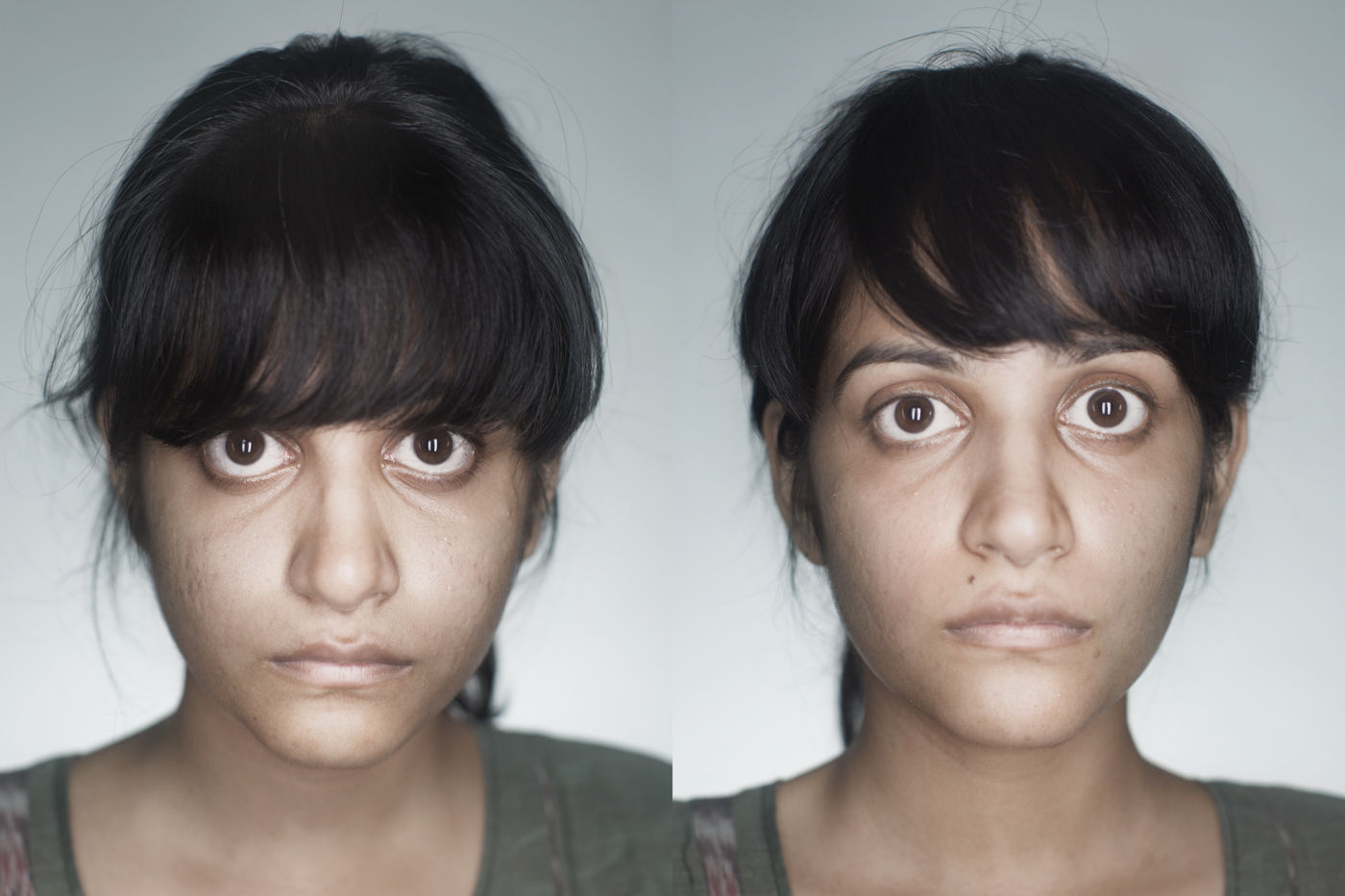
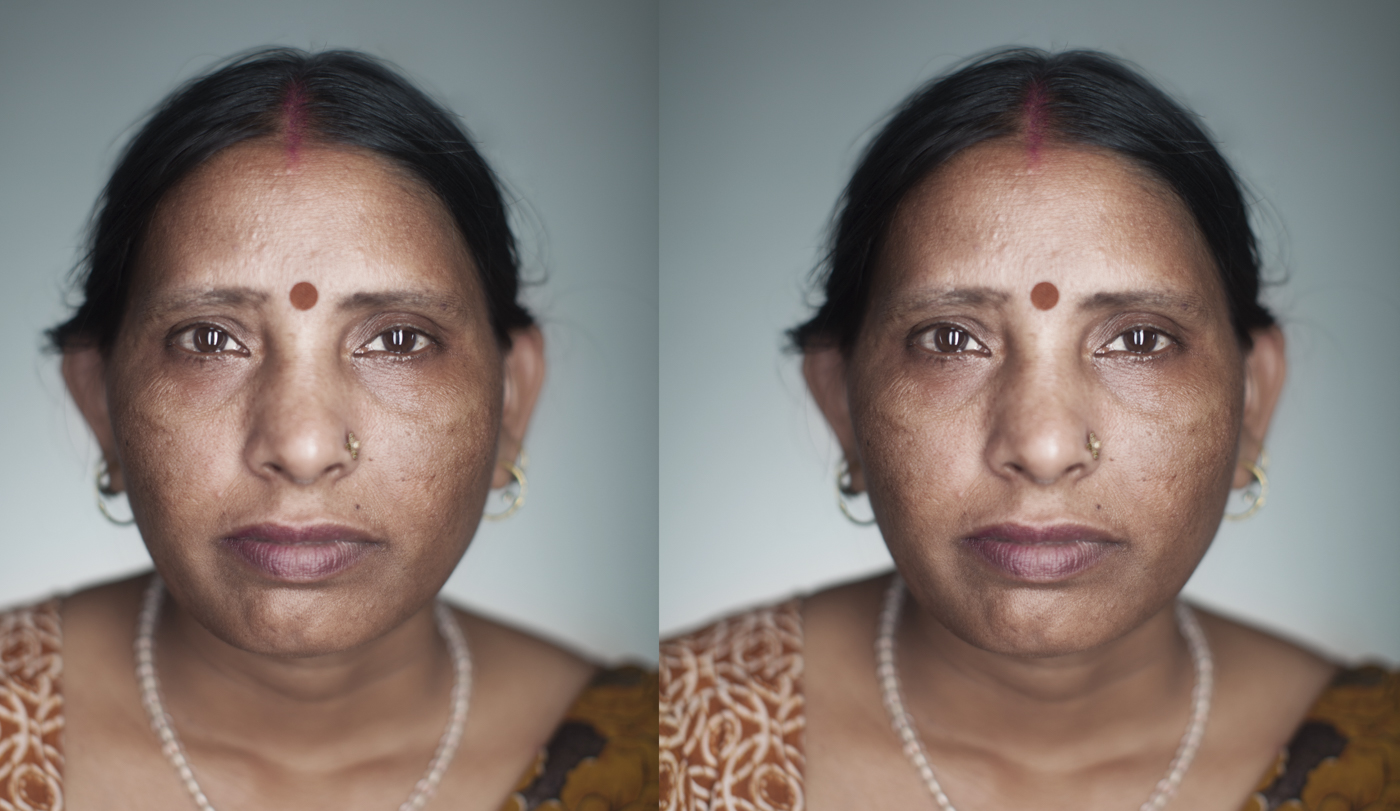
BEFORE AND AFTER [photography - India]
The human body carries meaning on its surface, but meaning is negotiated in relation to and in comparison with other bodies. It is through this comparison that the idea of beauty is made apparent: not as something possessed in itself, but as a characteristic that is socially bestowed, and that the possessor has the power to negotiate, to change, and to enhance.
It is the surface of the human body (i.e. the skin) that is valued visually, and superficially. By offering the tools to change or “fix” one's personal appearance in order to adhere to mythic ideals of beauty, marketers, manufacturers and the media create a ceaseless need to buy in order to beautify.
My attempt was to excavate the tricking of consumers into buying something, by unearthing half stories and half-truths. Beauty is such a highly subjective, constantly evolving idea. Yet, it is also increasingly standardized. A globalized consumerism has led to an incessant need for buying to beautify and instant gratification.
Traditional ‘before and after’ diptychs tell an obvious story. I've tried to challenge the perceptions of the viewer, and crush the notion of a "Before" and "After,” by using the formula of repetition to evoke multiple ways of “seeing” an image or “seeing” beauty itself.
As habit the viewer, looking back and forth, looks for a change or remedy in the ‘After’ image, but instead is forced to question the need for a beauty ideal, and in turn, of the products that enable that template of beauty.
This time the aim is to question instead of to compare.
AVANT APRÈS [photographie - Inde]
Le corps humain porte un sens à sa surface, mais le sens est négocié par rapport et en comparaison avec d'autres corps. C'est à travers cette comparaison que l'idée de beauté est mise en évidence: non pas comme une chose possédée en soi, mais comme une caractéristique socialement conférée, et que le possesseur a le pouvoir de négocier, de changer et d'améliorer.
C'est la surface du corps humain (c'est-à-dire la peau) qui est évaluée visuellement et superficiellement. En offrant les outils pour changer ou «réparer» son apparence personnelle afin de se conformer aux idéaux imaginaires de la beauté, les commerçants, les fabricants et les médias créent un besoin incessant d'acheter pour embellir.
Ma tentative est de révéler la tromperie à laquelle les consommateurs participent à l’achat des produits de beauté, mettant au jour ces histoires semi-vraies semi-fausses. La beauté est un idéal tellement subjectif et qui plus est en constante évolution. Pourtant, il est aussi de plus en plus standardisé. Un consumérisme mondialisé a conduit à un besoin incessant d'achat pour embellir et se gratifier instantanément.
Les diptyques traditionnels «avant - après» racontent une histoire évidente. J'ai essayé de défier les perceptions du spectateur et d'écraser la notion d’ «Avant» et «Après», en utilisant la formule de la répétition pour évoquer plusieurs façons de «voir» une image ou de «voir» la beauté elle-même.
Comme habitude, le spectateur, regardant dans les deux sens, cherche un changement ou un remède dans l'image 'Après'. Ici, il est contraint de remettre en question la nécessité d'un idéal de beauté, et à son tour des produits qui permettent ce modèle utopique.
Cette fois, le but est de questionner, au lieu de comparer.
Stéphane Desmeules
THE ECHO OF SPACES [photographie - Inde]
De l'infiniment grand à l'infiniment petit existent ces ingrédients visuels qui reviennent: la couleur, la forme ou la ligne. Ils deviennent comme des mots pour les yeux. Harmonie et beauté, je les ai trouvées comme un souvenir, une intuition. Des détails d'un objet à un paysage qui s'étend devant les yeux, c'est le même écho. Cela nous rappelle quelque chose, des histoires que l’on se raconte.
THE ECHO OF SPACES [photography - India]
From the infinitely large to the imperceptible tiny exists those visual ingredients that come back: the colour, the shape or the line. They become like words for the eyes. Harmony and beauty -- I found them like a souvenir, an intuition. From the details of an object to a landscape that spreads before the eyes, it is the same echo. It makes us remember something, tell stories to oneself.
Mariette Raina
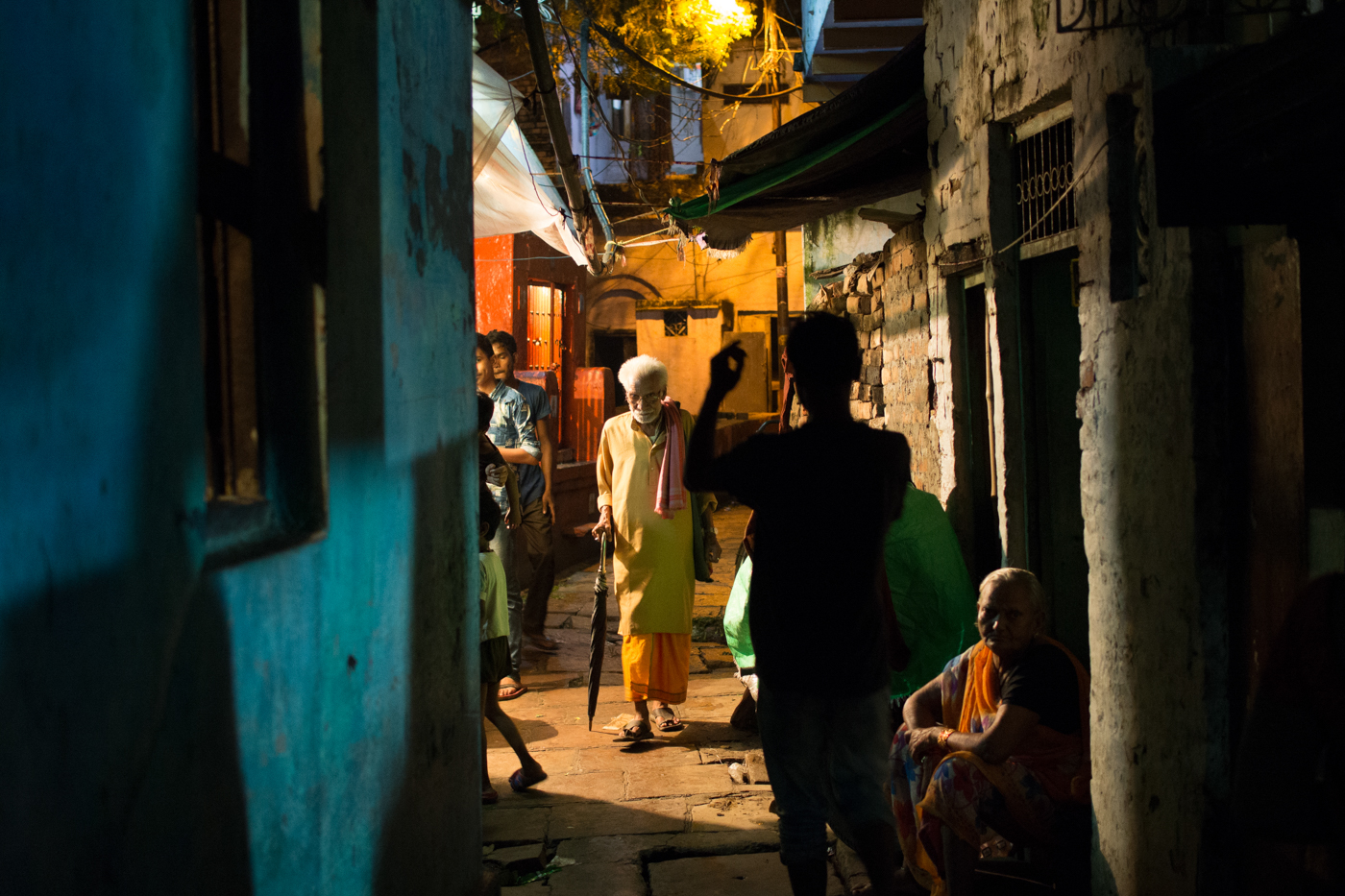
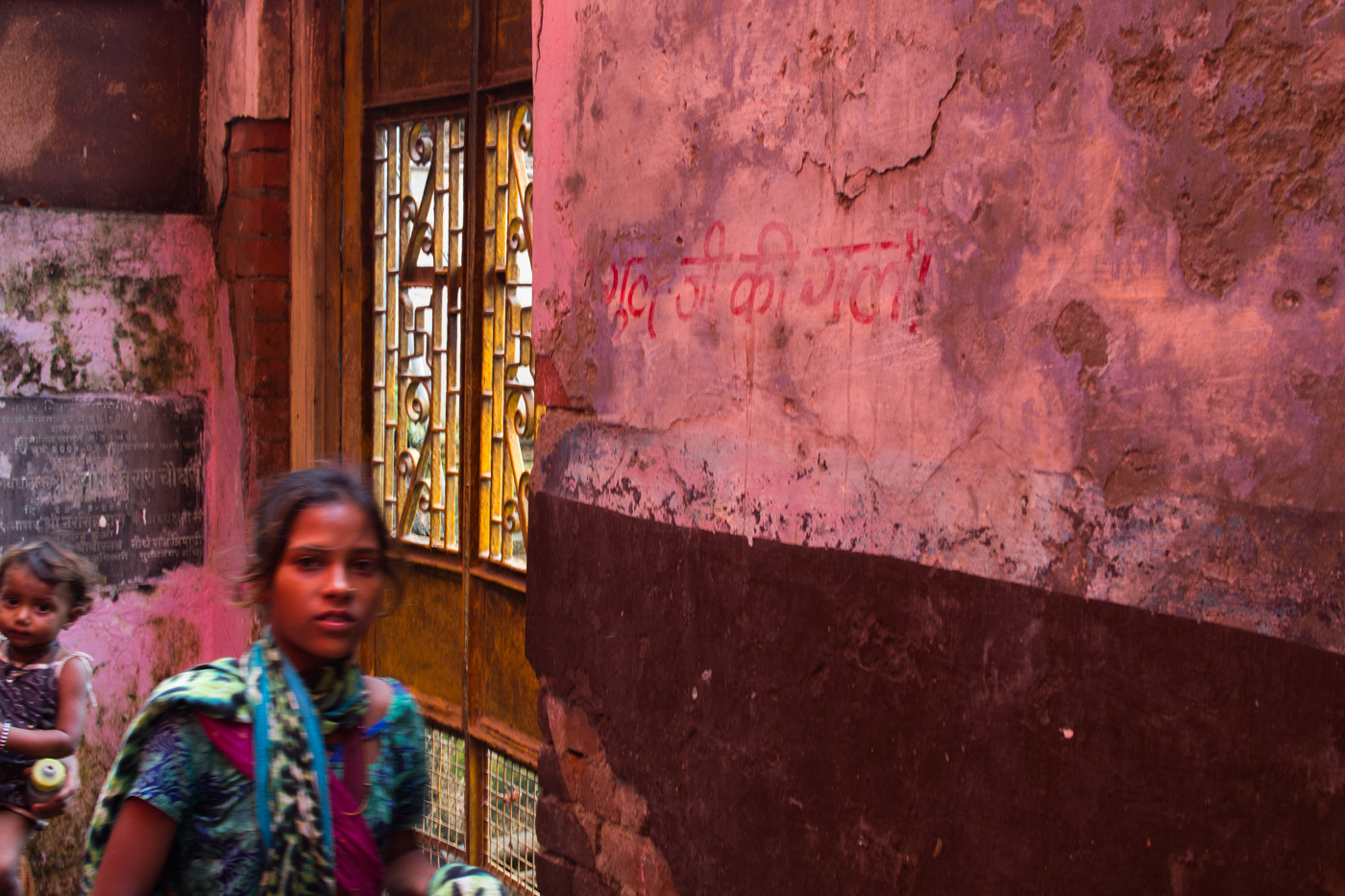


IN BETWEEN [photography - India]
I have always been fascinated by the “in between.” This space where a movement or a thought has started but has not ended yet. It lies before the conclusion, between the inhale and the exhale, between one sentence and the other, between one action leading to the next. Human beings tend to conclude right away or jump into another action, out of fear and need to feel that they are in control.
This is the moment when you have no plans, when you do not know anymore, when there is a silence during a conversation. The sacred space is hidden in time, in those “in between” sections. Those moments are magical, they are suspended beyond standard time and space. It is the moment when the human being is not contextualized anymore but brought to his archetypal form. In one moment, all the archetypes exist, as if in this one action the mystery of creation is actualized again.
ENTRE-DEUX [photographie - Inde]
J'ai toujours été fasciné par l'entre. Cet espace où un mouvement ou une pensée a commencé, mais n'est pas encore terminé. Il se situe avant la conclusion, entre l'inspiration et l'expiration, entre une phrase et l'autre, entre une action menant à la suivante. Les êtres humains ont tendance à conclure tout de suite ou à sauter sur une autre action, par peur et besoin de sentir qu'ils ont le contrôle.
C'est le moment où vous n'avez aucun plan, où vous ne savez plus, quand il y a un silence pendant une conversation. L'espace sacré est caché dans le temps, dans ces sections «entre les deux». Ces moments sont magiques, ils sont suspendus hors du temps et de l'espace réguliers. C'est le moment où l'être humain n'est plus contextualisé, mais ramené à sa forme archétypale. En un instant, tous les archétypes existent, comme si dans cette action unique le mystère de la création se réactualise.
Kiran Ambwani & Mariette Raina
Kiran Ambwani [photography - Nepal]
Mariette Raina [photography - india]
TRACES OF THE INVISIBLE [photography - India & Nepal]
There are movements and offerings that one makes to connect with the invisible world. The invisible is an extension of the concrete material world. Between here and there, lie the traces which act as bridges linking these worlds. Traces are also remnants of time, where the past is negotiated constantly updated in the present of the one who observes them.
TRACES DE L’INVISIBLE [photographie - Inde & Népal]
Il y a des mouvements et des offrandes que l'on fait pour se connecter au monde invisible. L'invisible est une extension du monde matériel concret. Entre ici et là, se trouvent les traces qui font agissent comme des ponts reliant les deux mondes. Les traces sont aussi des restes du temps, où se négocie le passé constamment réactualisé dans le présent de celui qui les observe.
Mobeen Ansari
HELLHOLE [short movie - Pakistan]
Hellhole is a short silent film based on the life of conservancy workers, better known as gutter cleaners as seen through the life and oft forgotten humanity of one such worker.
HELLHOLE [short movie - Pakistan]
Hellhole est un court métrage muet, basé sur la vie des travailleurs en préservation, mieux connu sous le nom de nettoyeurs des égouts, vu à travers la vie et l'humanité souvent oubliée d'un tel travailleur.





